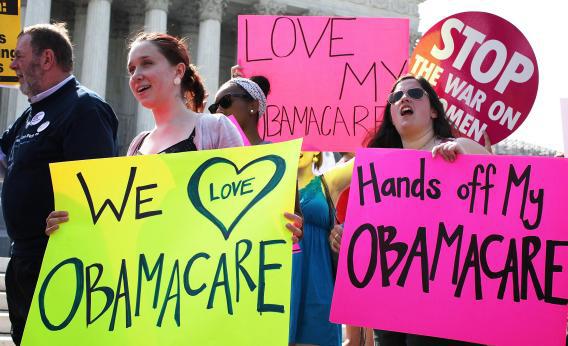While the Supreme Court did not invalidate the much-discussed individual mandate, it did rule one of Congress’ other tactics for expanding health insurance out of bounds—a particular approach to expanding Medicaid coverage.
Explaining what happened here requires some background, so please have patience.
Medicaid is a program to provide health coverage to low-income people. It’s run as a partnership between the federal government and the states, where states design their own programs within bounds set by federal regulations, and the federal government ponies up a large share of the money. How much of the money? It’s complicated. But basically the more a state spends, the more the federal government kicks in—but you get diminishing returns in terms of how much extra money you can get. So the upshot is that a stingy, conservative state can expand for cheaper at the margin than can a generous liberal state.
Medicaid is also basically the cheapest health insurance program around. It’s for poor people, it’s pretty stingy, and it pays providers poorly.
So somewhere in the legislative sausage-making, budget-conscious centrists realized that it would be cheaper to rely heavily on Medicaid expansion to achieve the Affordable Care Act’s coverage goals. To an extent this is exactly what liberals have been saying about single-payer all along. But in this case it played as a centrist desire to keep the bill relatively cheap. The problem is that most of the Medicaid expansion that would have to happen would have to come from politically conservative states. So Congress’ approach was essentially to make Red America an offer it couldn’t refuse—expansion could be done on very generous terms with the federal government picking up over 90 percent of the tab, but failure to expand would come with a hefty financial penalty in terms of lost matching Medicaid grants.
Chief Justice Roberts joined with the other conservatives on the court to argue that this penalty—withdrawing of existing federal money unless states kicked in new money of their own—overstepped the constitutional bounds of the spending power. So now states have the carrot to expand Medicaid but not the stick.
Since your state’s citizens have to pay taxes to the federal government one way or the other, you’d have to be pretty crazy to refuse the carrot, if you ask me. But ideological zeal may well lead some states to turn it down. In that case, substantially more people than the law’s authors expected might find themselves eligible for either hardship waivers from the mandate or subsidies to buy insurance on exchanges. How much of each of those things happened will depend on exactly what states do, and figuring out the budgetary implications of the whole thing is going to require some hard work by the little modeling gnomes at the Congressional Budget Office.
